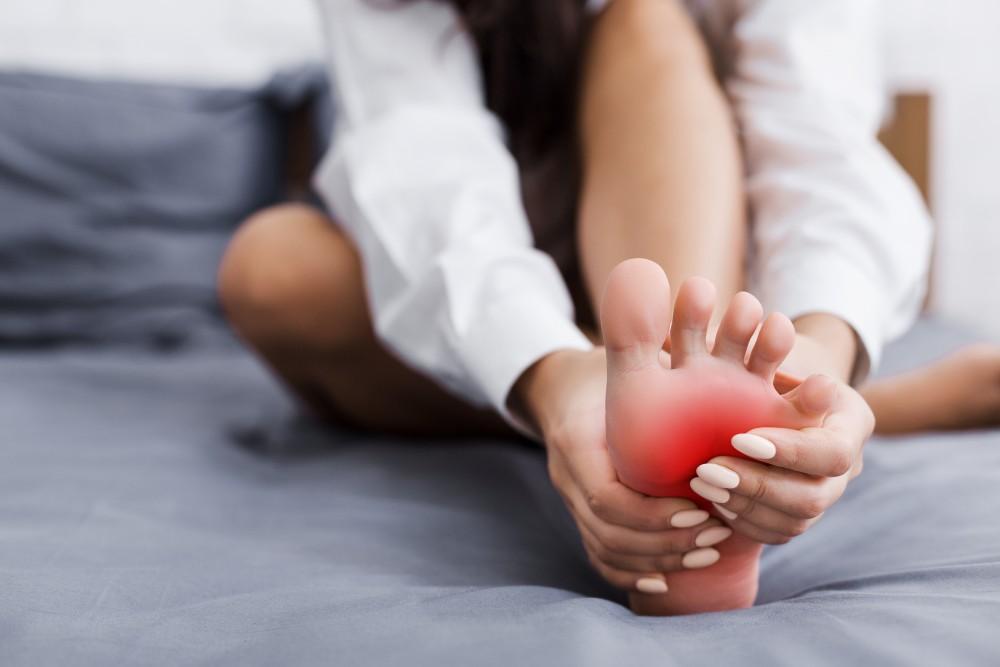
How Your Diabetic Diet Protects Your Feet

If you live with diabetes, foot care is probably top of mind for you. Diabetes causes different foot problems, and that’s just one of the things you have to manage as a side effect of this chronic condition. Others include vision problems, neuropathy, and slowed wound healing.
Diet is a key piece of diabetes management, but many aren’t aware that what you put in your mouth actually has a significant impact on the health of your diabetic feet.
At Premier Foot & Ankle, with nine convenient Texas locations, our podiatric team possesses valuable experience in providing advanced care for people with diabetes and managing their unique foot health needs.
Diabetes: The basics
Diabetes affects the way you metabolize glucose, or the components of your food that are transformed into energy for your body. When your body functions properly, your pancreas produces the hormone insulin after you eat, which helps transport the glucose to your cells.
With diabetes, your blood sugar level rises dangerously because your cells stop responding to the insulin, a condition known as insulin resistance. Your pancreas tries to keep up, but gets overwhelmed and your blood sugar rises.
There are two types of diabetes. Type 1 typically emerges in childhood, while type 2 is more lifestyle-related and emerges later — though younger and younger people are being affected. Over 34 million Americans live with diabetes, and about 90-95% of them have type 2.
How diabetes affects your feet
There are several ways that diabetes puts your feet at risk, and unfortunately, if each isn’t addressed promptly, more serious problems can ensue.
The neuropathy (nerve damage) that accompanies diabetes can make it difficult to sense when you have injured the skin on your foot. You may sustain a cut or scratch and be completely unaware of it. A blister can also turn into a menacing foot ulcer. Diabetes can lower oil and sweat production in your feet as well.
Meanwhile, infection may develop quickly. WIth diabetes, an infection can progress at lightning speed and lead to serious complications, such as amputation.
Reduced blood flow (peripheral artery disease, or PAD) to your feet is another problem, and seriously hinders the healing of wounds. This condition is caused when plaque from cholesterol and other fats accumulates on your artery walls. Patients with very low blood flow to their feet can experience wounds that don’t ever heal.
Finally, diabetes can compromise your overall immune system, which contributes to foot problems.
If you have diabetes, you might have problems with:
- Ingrown toenails
- Toenail fungus
- Corns
- Foot ulcers
- Plantar warts on the bottom of your foot
- Athletes foot
- Infections that can lead to sepsis, gangrene, and toe and limb loss
It’s critical to be vigilant about checking your feet for injuries and conditions that may cause or become wounds, keeping them dry and clean, and wearing soft socks and good footwear. But what you eat also directly affects your foot health.
Why eating well with diabetes helps your feet
In the last couple of decades, awareness about the importance of an anti-inflammatory diet has increased. Certain foods like highly refined carbohydrates, many meats, and processed foods contribute to putting your body into an inflammatory state and raising your sugar levels. The same is true for foods with trans fats, sugary drinks, and full-fat dairy products.
Eating these foods frequently has shown to contribute to or exacerbate a host of harmful chronic conditions, including diabetes.
Inflammation is good when your body is fighting an infection, but it’s harmful when it becomes a constant state. When you eat in a way that discourages inflammation and keeps your blood sugar levels in check, your diabetes and feet benefit. What does such a diet look like? It contains a variety of healthy food options, including:
- Plenty of fiber, found in sources like fruits and veggies
- Lean proteins, like fish and chicken
- Whole grains
- Healthy fats (things like olive oil and avocados as opposed to fried foods)
Finally, a healthy diet of whole foods is likely to keep your weight stable and in the normal range. An unhealthy diet that contributes to obesity certainly doesn’t help your diabetes or your foot symptoms.
Maintaining a healthy diet not only controls your diabetes, it supports your foot health, which lowers your risk significantly for diabetes foot-related problems.
If you do develop foot problems, we offer advanced treatments, from orthotics, top-notch wound care, and regenerative platelet-rich plasma therapy, to noninvasive extracorporeal pulse activation therapy (EPATⓇ) treatments and a radiofrequency treatment called PodiathermⓇ.
Call the Premier Foot & Ankle office most convenient to you and schedule an appointment to talk about your foot care while living with diabetes, or request one online today.
You Might Also Enjoy...


Lapiplasty: How 3D Bunion Correction Works

How to Get to the Root of Your Chronic Heel Pain

5 Ways to Care for Your Athletic Feet This Year

How to Keep Toenail Fungus From Spreading


